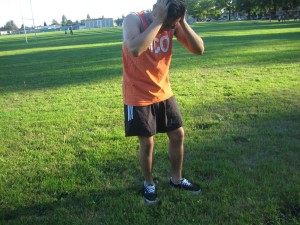In order to further understand what a closed head injury is, let us a look at this example. Consider yourself buying a carton of eggs at your local supermarket. It is highly likely for you to open the box to check the shells for any cracks. We may then assume that because the shells are not cracked, the yolks are intact as well. But there are instances that even when the shell is not cracked, the yolks are not damaged. The same concept can be applied to closed head injuries, which is often considered as more dangerous and severe than an open head injury.
What is a closed head injury?

In this type of injury, the head has been impacted, but the skull has not been damaged, so it is easy to assume that the severity of the injury is not that worse. Closed head injuries often results from major collisions such as getting into car accidents, slipping and falling, and receiving a hard blow to the head. In sports, however, closed head injury can happen as a result of a sudden and jerky backward movement of the head, making the brain collide with the skull. Although not all cases of closed head injury lead to traumatic results, it can still have debilitating effects on the brain’s normal functioning: when the brain is harmed it can interfere with the signals they produce.
Because of the internal trauma associated with closed head injury, the brain can become swollen adding more pressure to the brain functioning. This swelling can make brain tissues compress adding more injury to the brain.
What are the symptoms of closed head injury?
Unlike in an open head injury where the symptoms are more observable, the symptoms of a closed head injury may not be easily noticeable. Here are some of the common symptoms associated with this condition:
- Dizziness
- Headache
- Short-term memory loss
- Confusion
- Impairments in vision
- Convulsions
- Language and speech impairments
- Changes in mood and behavior
- Possible loss of consciousness
First Aid for Closed Head Injury
- Call emergency assistance immediately and do the following:
- Like in cases of other types of head injury, the neck of the victim of a closed head injury should not be moved. Immobilize and support the head, if possible.
- If the victim is vomiting, however, it could result to airway obstruction, particularly if he is unconscious. It is necessary to place him in a recovery position then.
- If patient is unconscious, check airway, breathing and circulation, and administer CPR if necessary.
- If the patient is awake, though, and there are no severe signs of brain trauma, you can allow the patient to rest while help arrives.
Your knowledge of basic first aid and CPR is an invaluable tool in times of emergency. If you want to enroll in a first aid and CPR course, check out this site for more information.
Sources:
“Closed Head Injury.” Brain Spinal Cord. Retrieved online on August 6, 2014 from Closed Head Injury
“Head Injury.” Medline Plus. Retrieved online on August 6, 2014 from Head Injury
